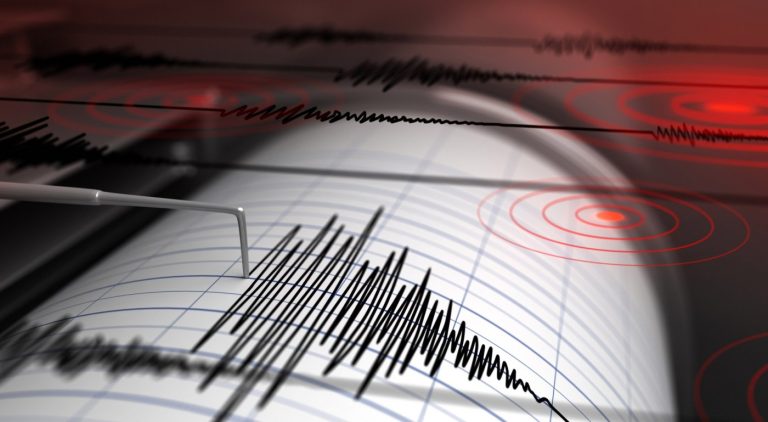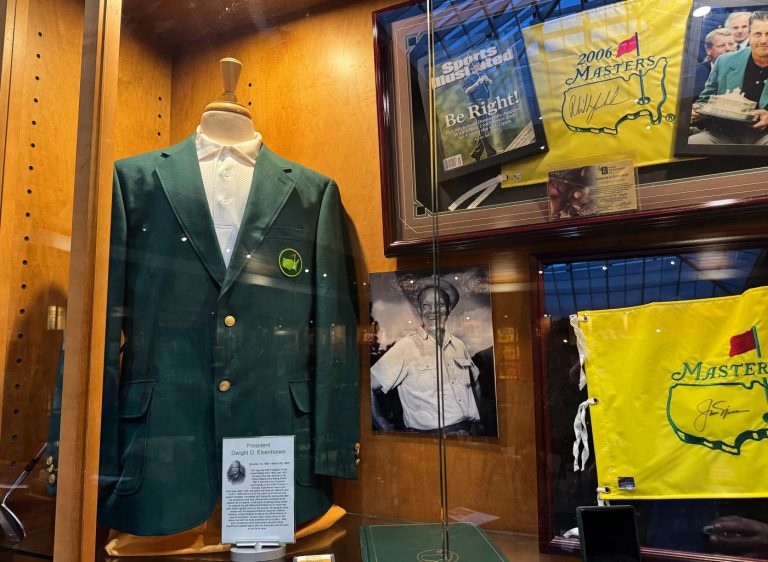Alex Harris | Miami Herald (TNS)
MARATHON, Fla. — The rescue mission began with a splash. Flippered and masked snorkelers rolled off a boat anchored near Marathon and into chest-high water. It didn’t take long to spot the target.
“This is what we’re looking for,” said Gabriel Delgado, hoisting a nearly foot-long shell, all elegant whorls and spires, above the lapping waves. He tilted it toward the sun, revealing the sunset colors inside — a Florida queen conch.
Delgado, an associate research scientist with the Florida Fish and Wildlife Conservation Commission, was leading a mission to find and relocate the iconic animal to greener — and cooler — pastures, where they might stand a better chance of mating.
After a one-two punch from nasty hurricanes, Irma in 2017 and Ian in 2022, the Florida population of the mollusk took a nosedive. In 2017, before the hurricane, scientists estimated there were about 700,000 adult conch along the Florida reef tract. In the most recent survey, in 2022, that number dropped to 126,000.
Numbers like that spell out one thing to scientists like Delgado. This population needs to make more babies, ASAP. At least, if the namesake of the independent island community of the Florida Keys — the Conch Republic — is not just a slogan for flags and bumper stickers.
But shallow water conchs appear to have a serious problem of sexual dysfunction.
Since 1999, Delgado and other scientists have noticed something strange about the queen conch nearest to shore. They weren’t reproducing. And when scientists sliced them open to figure out why, they noticed their reproductive organs were shrunken and underdeveloped, even though the conchs were the right age to start mating.
“We were thinking that it’s got to be some sort of anthropogenic contaminant, some chemical, sewage, something,” Delgado said.
One Environmental Protection Agency-funded study later found that wasn’t the case. And stranger still, the researchers found that when they moved those nearshore conch into deeper water, surrounded by other conchs, their reproductive system seemed to recover and they even started mating.
“Then it dawned on us, why don’t we look at temperature extremes,” Delgado said.
The running theory is that nearshore waters in the Florida Keys, where plenty of the remaining conch call home, are so shallow that they get very cold in the winter and very warm in the summer. Too cold for the snails to develop the gonads they need to mate, and then too hot to focus on anything but survival.
“What happens is the energy they would normally put in reproduction gets shunted off into basically staying alive,” he said.
Looking for love
Earlier this month, scientists set out to repeat an experiment that’s been successful before — and grown all the more crucial as ocean temperatures continue to rise under climate change.
The rescue mission, funded thanks to a $42,750 grant from the Fish & Wildlife Foundation of Florida, started in a shallow, hard-bottom area in Marathon. FWC researchers and a volunteer snorkeled around the area, peering past the spiny lobsters and clusters of deep purple sea urchins, to spot and collect adult queen conch.
They loaded more than 30 into blue milk crates and swam them back to the boats, where other researchers were waiting to start measuring.
Related Articles
The West is warming and drying so fast that a crucial drought-monitoring tool can’t keep up, study says
More lightning in forecast for Bay Area, but frequency expected to drop
Map: Biggest of the California wildfires that started amid Monday’s lightning
Wildfire in Placer County quickly consumes 500 acres
Lots of gray whales are swimming under the Golden Gate Bridge into San Francisco Bay. Why?
Ellery Lennon, a research associate at FWC, took the first candidate — specimen 6452 — and got to work. She measured its length and the thickness of its lip, which indicates its age. Researchers believe conch live about 20 to 30 years, but they don’t know for sure. Sometimes they can get a more precise reading by dating the corals that occasionally grow on their broad backs.
Queen conch do an impressive amount of growing in a short time. At birth, they’re the size of a period at the end of a sentence. And by year three or so, they can be nine or ten inches long.
Next, Lennon wrapped a wire tracking tag around the snail’s first and second spire, so they could come check on it down the line. The last step was a plastic ribbon, white with red polka dots.
“This way we can actually see ‘em,” she said. “Good job, friend.”
Work completed, she lifted the conch above her head and held perfectly still. A slow moment later, one thin little eye stalk peered out. Then another. Then, with a plop, came the bulbous nose and large muscular foot the conchs rely on to move around.
That foot makes them less vulnerable to hot waters than corals, which are stuck to boil when sea temperatures climb. But it doesn’t necessarily mean that conch can move far — only about two to three meters a day.
That’s why a declining population of conchs is such an issue. They need to be close enough to members of the opposite sex to actually mate. Delgado said his research has shown there needs to be at least 200 conchs per hectare, or 10,000 square meters, for the population to successfully grow.
From 2017 to 2022, Delgado said, most populations in the Keys fell below that level, so there wasn’t much reproduction happening. He likened it to a nuclear or zombie apocalypse on land.
“If the last man is in Canada and the last woman is in Australia, it’s going to take a while for them to find each other,” Delgado said.
In hot water
Back on the boat and under a wet tarp, the ribbon-festooned conchs moved faster than they ever have in their lives to another spot an hour north.
Here, the scientists strapped on dive gear and plunged into waters that were more than 20 feet deep, but a clear, electric blue. They gently placed the conchs on the sea floor, where they nearly disappeared in the sand and sea grass.
Here, the researchers hope, they will stay cool enough to continue maturing and hopefully start mating.
The distance from land also makes this spot attractive for another reason — poachers. It’s been illegal to harvest or even touch a Florida queen conch since 1985, and yet the FWC still catches poachers regularly.
“We know it’s happening, we just don’t know what the scale of it is,” Delgado said.
He recalled an incident back in 2010, when he and another diver were checking on a conch population at the Eastern Dry Rocks Sanctuary south of Key West. They swam closer to one, then realized it had a gaping hole in the crown, and there was no snail inside. The researchers found nearly 200 of these “knock shells” that afternoon, Delgado said.
“At the time, based off our estimate, that was 10% of that aggregation that someone has poached,” he said.
More than a decade later, poaching is still an issue. A video of a slew of knock shells at two spots in Key West drew attention this month, with the poster calling the poachers “scumbags.”
If the conchs manage to stay out of the hands of poachers and avoid getting buried in sand by a passing hurricane, there’s still the heat to handle.
While it doesn’t seem like high water temperatures are enough, on their own, to kill the conchs, Delgado worries that increasingly warm waters could worsen the breeding issues he’s already seen for decades.
Last year, he and another researcher looked at changes over time for sea surface temperatures in the Keys from 2004 to 2020. They found that overall temperatures were rising, and some spots were getting hotter than others.
Those new hot spots, which are more likely than neighboring spots to measure water temperatures higher than 86 degrees Fahrenheit, overlapped with 58% of conch breeding zones, they found.
That could be a problem for the continued survival of the Florida queen conch.
“If sea surface temperatures keep getting warmer, then yes, it’s a concern,” he said. “These tropical species are already operating at their thermal tolerance limits. If you push it a little bit further they don’t do well.”
This data, which has yet to be published, helped inform NOAA Fisheries’ decision in February to list the queen conch as threatened in Florida, Delgado said.
Those new protections, and a second try at a relocation project that’s already proved successful in the past, give Delgado hope for the future of his beloved conchs.
The ultimate goal, he said: “Put the conch back in the conch republic.”
©2024 Miami Herald. Visit at miamiherald.com. Distributed by Tribune Content Agency, LLC.












